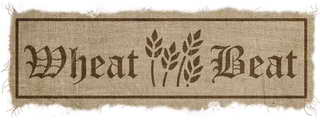This is a tutorial for how to do two popular bread dough shapes: boule (a round ball) and batard (a short, fat baguette shape).
Why shape dough?
Shaping bread dough properly before proofing is important for several reasons: Doing so adds a little strength to the dough just as a normal fold during bulk fermentation. Most importantly, it assures a uniform and even shape as you bake the dough. Even if you don’t care about the final aesthetics of your bread, a uniform shape assures a uniform bake and it allows you to avoid burnt or under-cooked spots in the final bread.
Preshape and resting
Many recipes call for “pre-shaping” dough and “resting” before the final shapes are made. When you first cut your dough into individual pieces, those pieces are irregular in shape and it helps later if they are closer to their final form from the get-go. That’s why if you are shaping a boule, it helps to “pre-shape” your freshly cut dough pieces into a loose ball first. If you were going to make a batard shape, it would help if your freshly cut dough pieces were roughly shaped like a fat sausage. A pre-shape is basically an intermediary between a roughly cut dough piece and your final shape.
Resting is when you pre-shape the dough but wait a while before doing the final shape. Resting is important, because cutting the dough into individual pieces and doing the pre-shape actually tightens up the gluten structure and reduces extensibility of the dough. When dough sits out for about 10-15 minutes, the gluten structure relaxes and it makes it easier to stretch and fold the dough into its final shape. If you don’t allow a proper resting period, you may stretch the dough out to become flatter, but it will just bounce back to its original shape like a rubber band.
Boules and batards are some of the easiest and most common shapes in bread-making. It’s a great place to start if you are new to bread-making. The most challenging bread shape to make is a baguette. I plan to dedicate an entire post just to that shape later.
SHAPE A BOULE
For a boule, your final shape is a round ball. That’s why your pre-shape should also be roughly a symmetrical ball. On a lightly floured work surface, flatten that rested ball into a symmetrical piece.


Pick up the top part of the square and pull it over and to the center. Now pick up the bottom half and fold it up to the center as well. You will now have a long rectangular shape.


Next, take the left side and fold it over to the middle. Now take the right side and fold it to the middle as well.


Lastly, flip the whole thing over so the seam is facing down. On a very lightly or un-floured surface, gently pull and rotate the ball towards you so it forms into a circular shape and the seam at the bottom is sealed tightly. Be careful not to stretch the dough out so tight that the skin begins to tear. Now you can flip it over again and place in your proofing basket.




As you can see above, the dough before and after the shaping doesn’t look that different, but there are differences inside which will become evident after you bake it.
Congratulations! You’ve formed a boule.
SHAPE A BATARD
Now we will shape a batard, which is very similar to a boule except that it is a little elongated. This is a great shape for placing in loaf pans.

As with the boule, we start with a flattened piece of dough. For a boule it was symmetrical round. For a batard it is a bit like a rectangle.







As you can see, these are not difficult shapes to make. After a little practice you will do them like a pro.
Have comments, suggestions or your own tips to share? Please share with us below.
